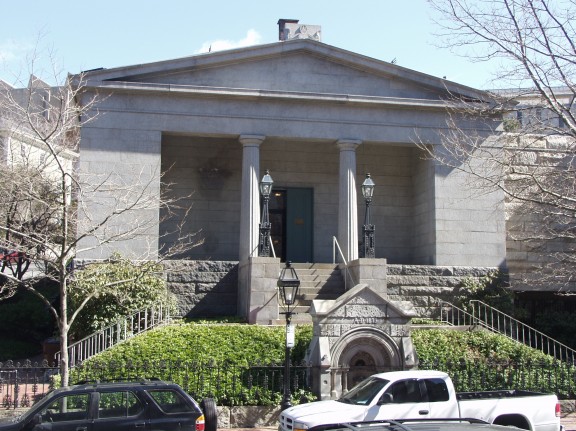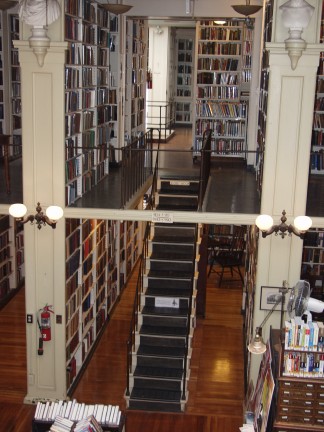The Providence Athenaeum
Over the past 250 years The Providence Athenaeum has enjoyed a vibrant history in remarkable settings. Founded in 1753 as an independent member-supported library, it has been located on Benefit Street on the historic East Side of Providence since 1838. Situated between Brown University and the Rhode Island School of Design, the Greek Revival building, designed by William Strickland, is the only example of his work in New England and is credited with promoting the style throughout the area. Subsequent additions by Norman Isham and William Platner allowed the library to expand its collection and storage capacity as well as provide additional spaces for the members; including a children’s area, a climate controlled rare book room, and additional office space. The Athenaeum contracted Lerner Ladds + Bartels to address structural and life safety deficiencies prevalent throughout the building, as well as refine their existing master plan. The “Bound,” located directly below the circulation desk, (named for its traditional use as a bound-periodical storage area) was experiencing significant structural failure in the ceiling joists. Temporary steel columns filled the room in attempt to curb settling. LLB was charged with finding a permanent structural solution which would also eliminate all intermediate structure from the space. The removal of the existing columns and stacks, along with the subsequent finishes renovation, provided the Athenaeum with much needed flex-space usable for a range of functions. In conjunction with the structural renovation, LLB and their consultants identified all existing life-safety violations existing throughout the building. A report was compiled and presented to the Board of Directors which suggested ways to conform to current building codes while maintaining the historic integrity of the library. Construction was scheduled to coordinate with the Athenaeum’s annual summer shut-down, which allowed all of the heavy work to occur without interruption to the library staff and patrons. Not only was the primary goal to assist in the stability and integrity of the building itself, but also to maintain distinct coordination between consultants, and ensure that full operation of the Athenaeum was maintained throughout its project timeline. Phasing proved crucial to the project’s success, along with many protective measures to guard from debris, noise and other discomforts.


